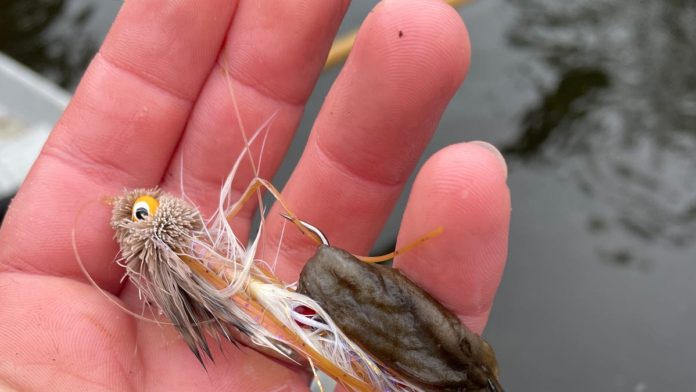A mysterious algae with the potential to devastate Michigan waterways was spotted in the Lower Peninsula for the first time last month, a worrying development for biologists racing to learn more about what causes its voracious blooms.
The Michigan Department of Natural Resources alerted the public to the algae sighting on Monday and warned anglers to wash their gear after getting off the water to prevent further spread.
“We’re taking this very seriously,” said Bill Keiper, an aquatic biologist with the Michigan Department of Environment, Great Lakes and Energy. “Our sense is it could invade any cold water stream we have in the state.”
The algae — didymo, or “rock snot” — was in bloom on the Upper Manistee River when Sam Day saw it in a Kalkaska County stretch of the Upper Manistee River on Nov. 14.
Day, a water quality biologist for the Little Traverse Bay Bands of Odawa Indians, studied didymo as an undergraduate student at Lake Superior State University and in his master’s program at Tennessee Tech University. He was fishing with friends when he saw a tuft of the stringy algae in mid-November. They anchored so he could inspect further.
The algae had didymo’s texture — strangely dry, like wet wool. Day scooped a sample to take to work the next day. Through a microscope, he confirmed his suspicion: It was didymo in bloom, the first sighting in Michigan’s Lower Peninsula.
That could spell a problem for the Manistee and other prized Michigan streams. Didymo, when in bloom, can cover stream beds and drastically reduce the types of bugs that can survive, Day said. That would mean fish, including trout and others popular for fishing, have less food available.
“If the fishery does become impacted by didymo, it could put a pretty decent dent in the wallets of a lot of local fly shops and fly fishing guides,” Day said.
Didymo is not considered an invasive species to Michigan, Keipler said. Biologists reported finding cells of the algae in Lake Superior a century ago, although he said they didn’t indicate whether it was in bloom.
The algae is not toxic or dangerous to humans, but it certainly can be a nuisance. When it blooms, didymo turns into long, ropey strands that carpet rocks and logs with gunk.
The first reported didymo bloom in Michigan happened on the St. Mary’s River near Sault Ste. Marie in 2015. The algae continues to bloom there every year, Keipler said.
Didymo blooms remain a mystery to biologists. They aren’t sure what causes the algae to turn from an invisible, unobtrusive algae into a thick, stringy mass.
“It could be present for a long time and for whatever reason just decides to bloom,” Keipler said. “It’s a real complex organism. A lot of folks are pretty baffled by it.”
Didymo is a unique algae, Day said. It blooms in cold water that doesn’t contain a lot of nutrients like nitrogen or phosphorus. Other algae, including the cyanobacteria that cause harmful algal blooms, thrive in warm water laden with nutrients from sources like broken septic systems and farm runoff.
Michigan has a lot of cold water streams that are popular with anglers and likely vulnerable to didymo blooms.
“Those are a lot of your really high-quality trout fisheries like, say, the Manistee or the Au Sable (rivers),” Day said. “They’re cold, low nutrient streams just naturally and happen to be great trout fisheries for that reason. Conversely, they happen to be perfect habitat for didymo to form those blooms.”
It’s possible didymo is widespread in Michigan streams but hasn’t bloomed outside of the St. Mary’s or Upper Manistee rivers. Day said he hopes to start checking next year for the algae in northern Michigan streams through his work with the Little Traverse Band.
There is no good strategy for controlling didymo when it blooms, so state biologists are urging people to always clean and dry their equipment after boating, fishing or wading in Michigan streams.
“There is huge potential to spread didymo,” Keiper said. “It’s so microscopic and it can stick to anything it comes into contact with, like boots, laces, fishing gear and waders.”
ckthompson@detroitnews.com
Credit: Source link































